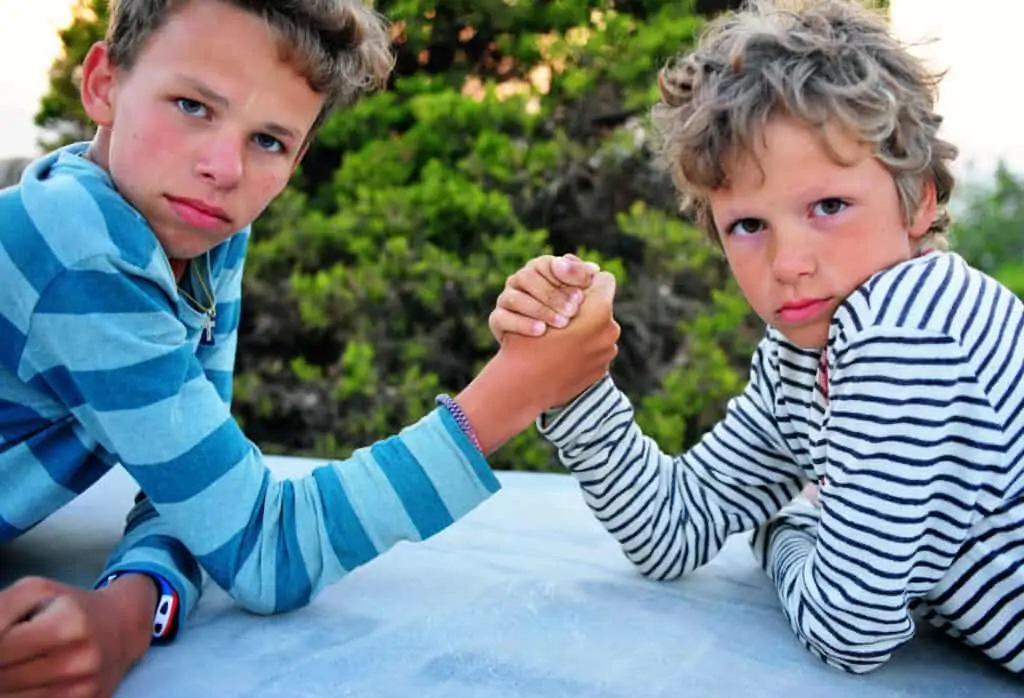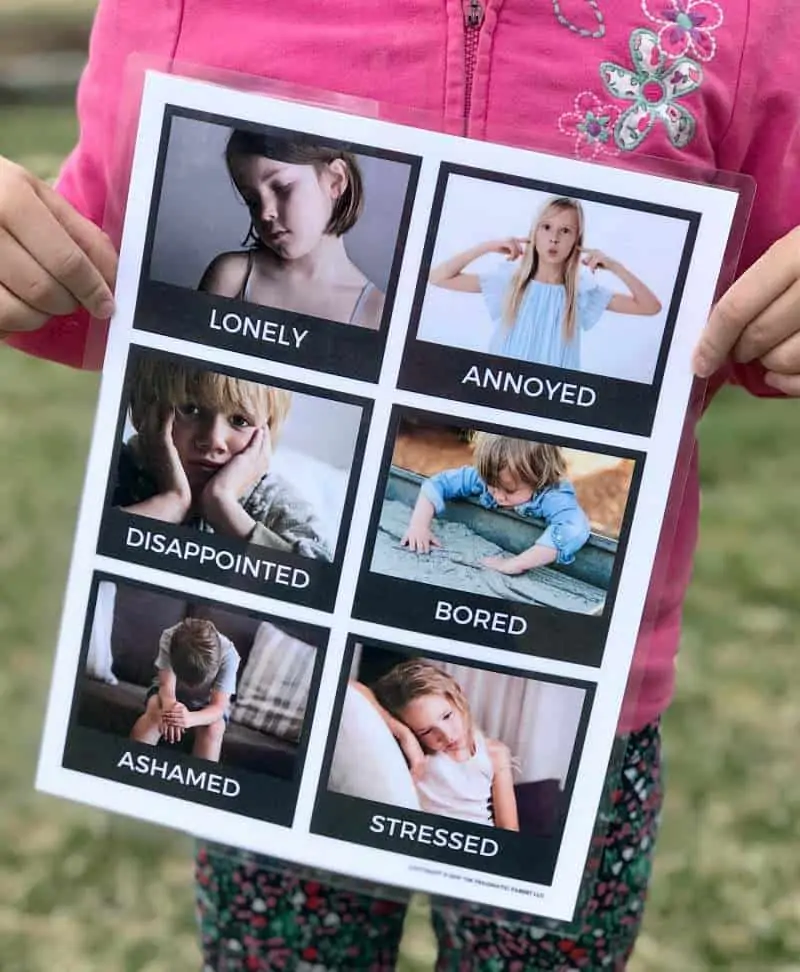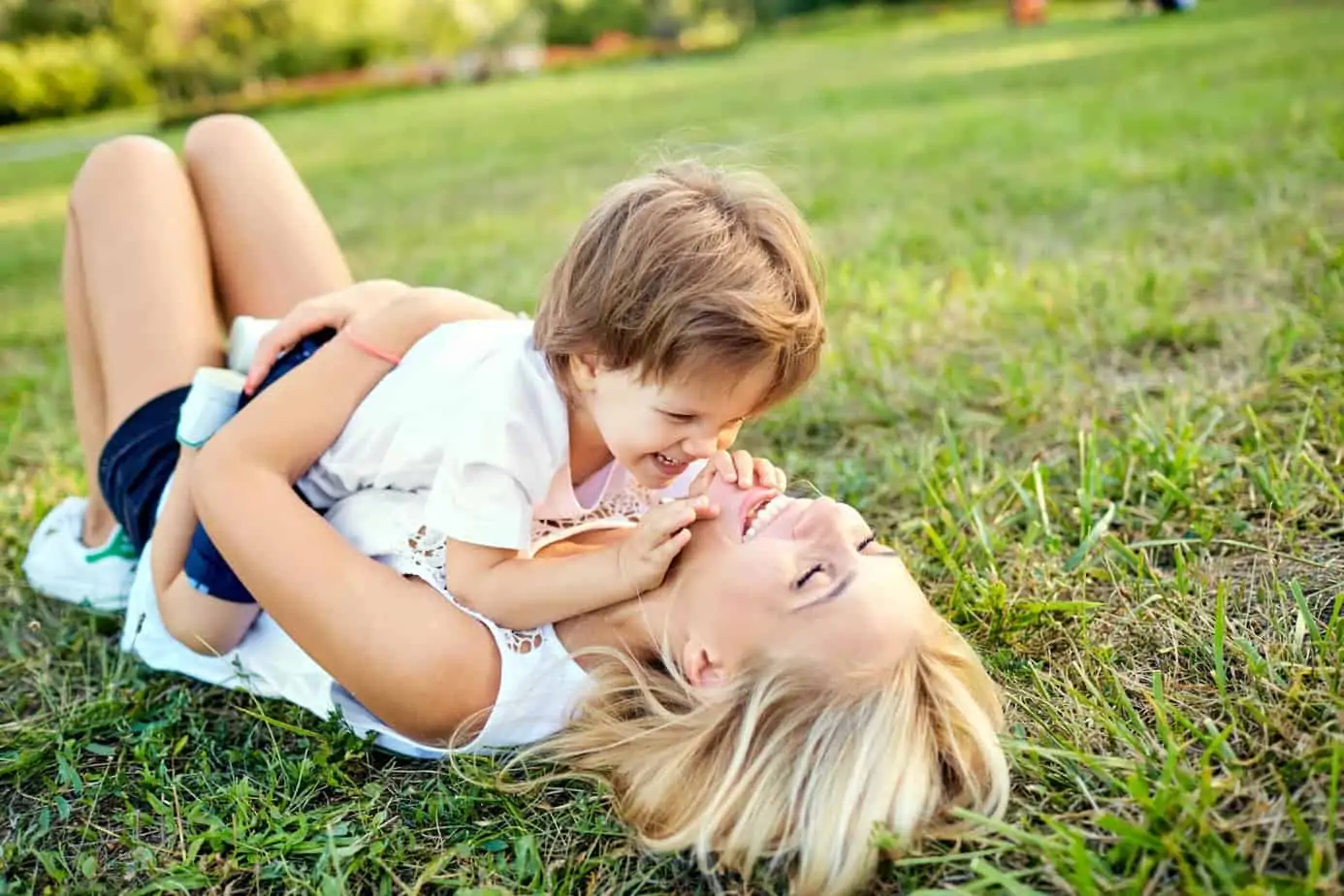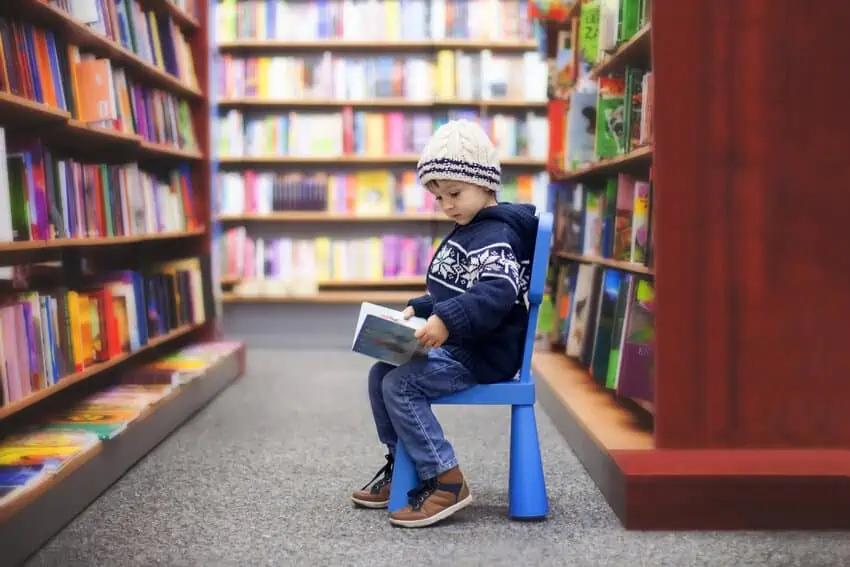The 4 simple steps to banish power struggles with kids, nip back talk, handle a disrespectful child, and what to do when your child tells you no. Positive parenting tips for connection. Plus, use Emotion identification tools help kids identify, name, communicate their feelings and what’s going on under the surface instead of covering them up in other ways.
How to Nip Power Struggles & Deal with a Disrespectful Child
Have you ever noticed when your kids talk back it begins a back and forth similar to a tennis match?
Your child says something to you that’s out of line or inappropriate, or just downright disrespectful.
Sometimes they tell you “NO!” and what happens next?
You react, and hit back with a quick comeback, a time out or form of punishment to counter their misbehavior.
But… it doesn’t just stop there.
(Because it never does, amiright?)
Before you know it, there’s a huge power struggle going on… all the while tempers are rising, frustration is building and tension could be cut with a knife.
In this game of tennis, there are no winners, only losers.
Except, I have something that’s going to help so you don’t have power struggle tennis matches like this anymore.
I promise, if you follow the steps I teach, you’re going to see…
- Challenging behavior that can be minimized quickly
- Less power struggles, defiance and resistance,
- More connection, and most importantly
- Better communication and children who express their emotions without tears, yelling or shouting “No!”
The four steps I share are entirely based on the principles of positive parenting and doesn’t involve time-outs, punishment, yelling.
When your child tells you no, talks back, is acting disrespectful, in the middle of an outburst, tantrum or when they’re having a hard time transitioning from one thing to another…
Use these four steps that work like magic to stop big emotions in their tracks and bring more peace to the situation.
When you respect your children and get down to their level where you can see them, hear them and listen to what they think and feel, they’ll learn to respect their own inner voice and express emotions it in a kinder way.
Honor how your child communicates and feels, because although they’re little, they have very real, valid thoughts and feelings.
It’s Ok for Your Child to Say ‘No’ in Certain Situations
My twins are in second grade and have recently started expressing their opinions about what they want to do, as well as what they don’t want to do.
It’s great they have opinions – just not about certain things like dropping their backpacks on the floor and not wanting to pick them up, or saying “no” when it’s time to wash hands before dinner.
I’m all about having opinions and speaking up, but some things aren’t open to debate.
There are boundaries in our home and acting respectfully and with kindness towards one another is a line in the sand.
However, contrary to popular belief, I think it’s Ok when my kids say “no” to me, as long as they can explain why they feel this way and what the reasoning is behind this response.
But wait, let me explain before you jump ship.
In fact, I want them to say ‘no’ in certain situations.
I teach my kids it’s ok to say no when they need to stand up for themselves, to be confident saying say what they think and feel, and I want them to feel comfortable to put it themselves out there in the world if they need to.
Whether it’s to set boundaries, to say safe or express themselves, there are times when I’m cheering on my kids to say ‘No!’
But… talking back when a parent has a realistic expectation or request for their child, such as asking them to wash their hands, sit down and do homework, make their bed, pick up after themselves or when its time to shut off electronics or come inside from playing… then talking back isn’t appropriate.
How you chose to handle a disrespectful child who is engaging in a power struggle with you, can actually bring you closer and diffuse the situation, not escalate it.
Disrespect & Power Struggles Can be Triggering for Parents
I know when your child begins a power struggle or acts disrespectful, it can trigger you to see red.
However, it’s important to remember this one important fact:
All behavior is trying to tell us something.
But… before you slide into an emotionally reactive place, just remember if you want your child to calm down, then you have to stay calm too. And then, you have to figure out what their behavior is trying to tell you.
- what’s underneath the attitude?
- why does your child feel out of control?
- are they feeling powerless?
- is he feeling overwhelmed? hurt? misunderstood?
Sure, it’s frustrating and annoying when kids talk back – but this isn’t always about us.
Related: New Ideas to Help You Practice Calm Parenting & Stop Yelling When You Feel Mad
STEP 1: Calm Your Reaction When Your Child Tells You ‘No!’
Before you slide into an emotionally reactive place, and feed into a power struggle and lose-lose game of tennis, remember if you want your child to calm down and connect with you, then you have to stay calm too.
This is where you have to put on your kid goggles and attempt to see things from your child’s perspective and understand their behavior.
Think about all the things going on in your child’s life and environment which may have led to the behavior. For example:
- Your child just started school a few weeks ago, so they’re still getting used to a new routine, being asked to sit still for long hours at a time, riding the bus, juggling after school activities, waking up early.
- Has your child been ordered around and told what to do with too much, without being given a choice or say in their situation?
- Are they tired?
- Hungry?
- Have they experienced a change to their routine?
Related: Here are 14 different factors that influence a child’s behavior, or can trigger their misbehavior
Children who feel a loss of control, will act out in an attempt to grab control someplace – even if it’s through back talk, acting disrespectfully and asserting themselves by saying, “No!”
I have to remind myself when I feel my temper begin to form that it’s Ok to allow my kids to have these thoughts and feelings, but it’s up to me to guide them how to express their emotions in a positive, respectful and kind way.
Here’s how to do just that:
Step 2: Offer Empathy with Emotional Behavior
-
The first step is to build a bridge with empathy and then you can redirect and teach. Don’t jump on misbehavior!
-
Get down on their level. See your child, validate his feelings and let him know you see where he’s coming from.
-
A child who is grabbing at control through back talk and acting out, just wants to be seen and heard, and given a empathetic shoulder.
Step 3: Redirect and Teach After Your Child is Disrespectful
-
Once a child feels seen and heard, they’re much more open to responding to you. They won’t respond withdefiance, digging in or resisting you.
-
This is where you give your child language and words they can use.“Let’s find a better way to figure out this problem. You can tell me when you feel angry…”
-
Kids don’t have the words to use and this is where you give them the words to use when they need to express themselves in a respectful and kind way.
- One of the best ways to teach language? Model it for them by catching yourself and sharing what you could have done different.
-
I’ve found that by using these emotion picture cards with kids (because young children are more visual than auditory or kinesthetic learners) they’re able to more easily internalize and then recognize emotions from pictures of other children. It also makes it easier for them to communicate what they feel when they have a tool like this.
Step 4: Offer Flexibility and Choices to Meet a Child’s Need for Power and Control
-
Be flexible, but hold your limits without being permissive.
-
Flexibility and choice help meet a child’s need for control. They may not want to do something, but when you offer choices, it softens their resistance and helps meet their need so they can move on.
- Although they may still not want to do something, giving choices gives them power and disengages the power struggle.
You Can Always Do This One Simple Thing to Connect With Your Child & Cut the Tension During a Power Struggle
My go to with all my kids when theirs tears, tension, misbehavior and especially backtalk, is to offer a hug.
Sometimes kids just want to connect with us and know we’re there for them, see them and are on their team. It’s human nature – we all want to feel connected to the most important people to us.
Connecting with my kids by hugging them tightly for at least 20 seconds, always eases the tension for both of us.
The next time you get an attitude, instead of reacting or falling into a tennis match of who has the power, stop and give them a hug and wait to see what happens.
I promise you’ll feel the tension release from their little bodies with a little affection.
They’ll disengage and ends the power struggle.
More Positive Parenting Resources:
- 9 Positive Parenting Solutions for a Yell Free Home
- Positive Parenting Strategy: The Key to Connection Can be Found in the Child Ego State
- 5:1 Rule of Parenting: Shift Your Kid’s Behavior from Negative to Positive
- What’s Your Child’s Love Language? The 5 Love Languages of Kids
- 5-Steps to Control Your Anger with Kids & Stay Calm
Want even more?
Shop All Parenting Resources
Shop all of our parenting resources from self-regulation tools and managing big emotions to building self esteem and confidence. There are resources for all seasons of life!









